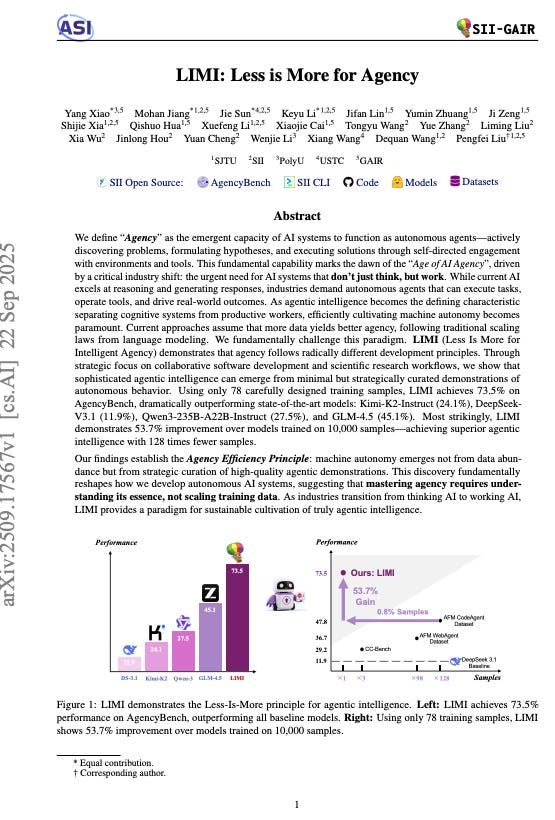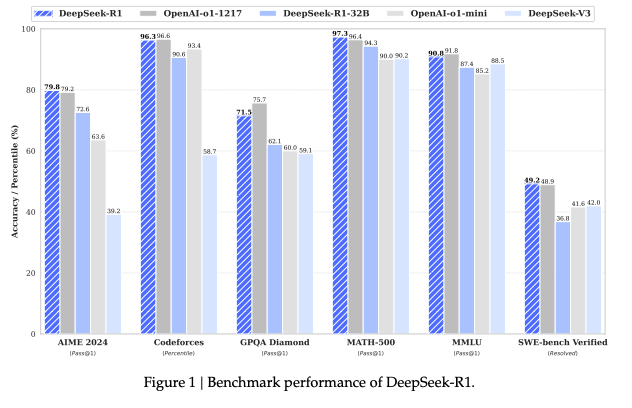Agents Take AI from Thinking to Working
As an investor and a builder, I’ve spent my career hunting for a single, elusive thing: leverage. In my hedge fund days, we used Python and machine learning to find the financial DNA of great companies, turning data into an analytical edge. Today, in my family office, I invest in and build AI tools for tech companies, seeking to give them the same kind of asymmetric advantage. The core principle is always the same: how can we achieve a 100x outcome with 1x the input?
It’s the question that drives all technological and financial progress.
We build wealth systems using these principles here:
The world of artificial intelligence has been running in the opposite direction. The dominant philosophy, the one preached in every boardroom and venture capital pitch, has been brute force.
The so-called “scaling laws” dictated that the only path to more capable AI was through more: more data, more computing power, more energy, more capital. It was an industrial-era mindset for a digital-age technology, a race to see who could build the biggest factory and shovel the most raw material into it. This approach produced marvels, like the large language models we use every day, but it felt inefficient, unsustainable, and profoundly lacking in leverage.
This approach was taking us toward centralization and brittleness.
Now, a groundbreaking research paper has shattered that paradigm. Titled "LIMI: Less is More for Agency" a team of researchers has just handed us the keys to a new era of AI development. They’ve proven that in the quest to build truly autonomous AI agents, AI that doesn’t just think but actively works, the answer isn’t massive scale, but surgical precision.
Their method was deceptively simple but revolutionary in its implications. Instead of force-feeding their AI model, LIMI, with a dataset of millions or billions of examples, they curated a tiny, hyper-concentrated training set of just 78 samples. These were meticulously crafted demonstrations of expert-level work in complex domains like collaborative software development and scientific research. The results were staggering. On AgencyBench, a rigorous test of an AI’s ability to perform real-world tasks, LIMI scored an incredible 73.5%, crushing industry giants trained on vastly larger datasets. Most remarkably, LIMI showed a 53.7% performance gain over a model trained on 10,000 samples, achieving this superior intelligence with 128 times less data.
Think of that efficiency gain.
The paper’s core contribution is a powerful new concept they call the Agency Efficiency Principle: machine autonomy emerges not from the sheer volume of data, but from the strategic curation of high-quality demonstrations.
In my world, this is the ultimate leverage. It’s the discovery that you don’t need to build a billion-dollar factory when an artisanal workshop with a master craftsman can produce a better result. This isn't just a step forward for AI, it's a fundamental shift in the economics and strategy of building the future.
The Breakthrough
To truly appreciate the significance of LIMI, you have to understand the world it was born into.
The field of AI has been dominated by the Scaling Hypothesis for the better part of a decade. The idea, first proposed in the context of language models, was that performance scaled predictably with the size of the model and the amount of training data.
This created a compute arms race that is still escalating to this day.
The companies with the biggest balance sheets and the most access to GPUs (Google, OpenAI, Meta) had an seemingly insurmountable moat. For anyone else, including the dozens of promising companies in my portfolio, competing on this axis was a losing proposition. We were told that building truly capable AI was a game of brute-force scale, a war of attrition that only the giants could win.
This paradigm was particularly limiting for the next frontier of AI: agency.
Agency is the emergent ability of an AI to be more than a passive chatbot. It’s the capacity to function as an autonomous worker that can discover problems, formulate plans, use digital tools, and execute solutions in the real world. While we’ve made AIs that can think, the urgent industry need is for AIs that can work. The assumption was that teaching an AI to be a competent software engineer or a research scientist would require showing it every line of code on GitHub or every scientific paper ever published. It was a daunting, almost impossibly expensive vision.
LIMI’s innovation was to challenge this core assumption head-on. The researchers hypothesized that the skills needed for agency (complex reasoning, tool use, strategic planning) were different from the skills needed for language fluency. Agency, they wagered, could be taught more like a master’s apprenticeship than a grade-school education.
This is reminiscent of DeepDeek’s approach:
DeepSeek Proves AI Comes for All Jobs - Even AI Jobs
I don’t want to get a reputation for reactivity or hyperbolic statements.. but what just happened in the AI world (also the real world) changed the development trajectory of humanity.
Back to the ASI team: their breakthrough was to focus on the quality and density of the training data, not its size.
They developed a novel method of data collection centered on what they call "trajectories". A trajectory isn't just a question and an answer. It's the complete, multi-turn record of an expert agent solving a complex problem from start to finish. It captures the agent's internal reasoning, every tool it invokes, the feedback it receives from the environment, and how it course-corrects to ultimately succeed. They sourced these expert demonstrations from two high-value domains: "vibe coding," a term for the fluid, collaborative process of modern software development, and complex scientific research workflows. By curating just 78 of these dense, information-rich trajectories, they created a dataset that was small in size but immense in instructional value.
This flips the old assumption on its head.
The prevailing wisdom was that agentic capabilities were an emergent property of massive scale. The LIMI paper proves that agency is a skill that can be instilled with remarkable efficiency through highly concentrated, exemplary data. This research doesn't just offer a better way to train AI, it offers a more democratic one. It shifts the competitive advantage from those with the most capital to those with the best strategy. For an investor like me, this is a seismic shift.
It means the most innovative teams can now build elite, specialized AI agents without needing a nation-state’s budget. It’s a transition from brute force to intelligent design, and it just leveled the playing field for the entire industry.
(Programming note: in an upcoming series for Paid Subscribers we’re going to explore how Agent coordination is being developed to harness this rising power of AI into entire organizations of digital workers — stay tuned!)
Now, let’s look deeper into this research and unpack how this changes things.
Why this is the start of a new era:





